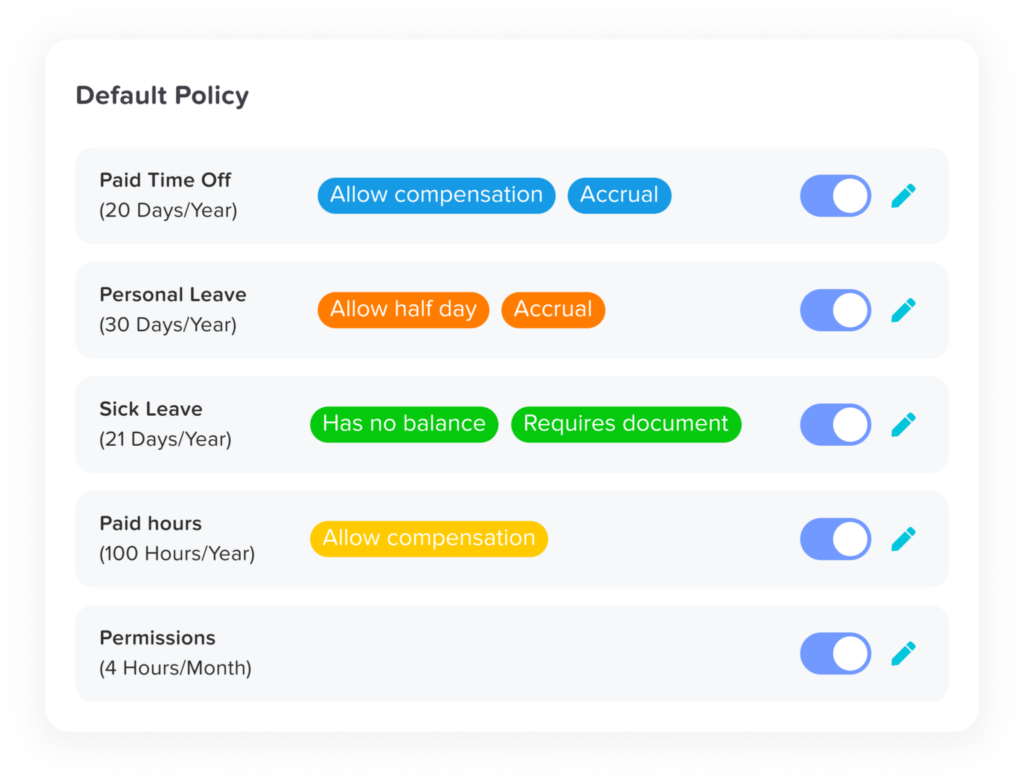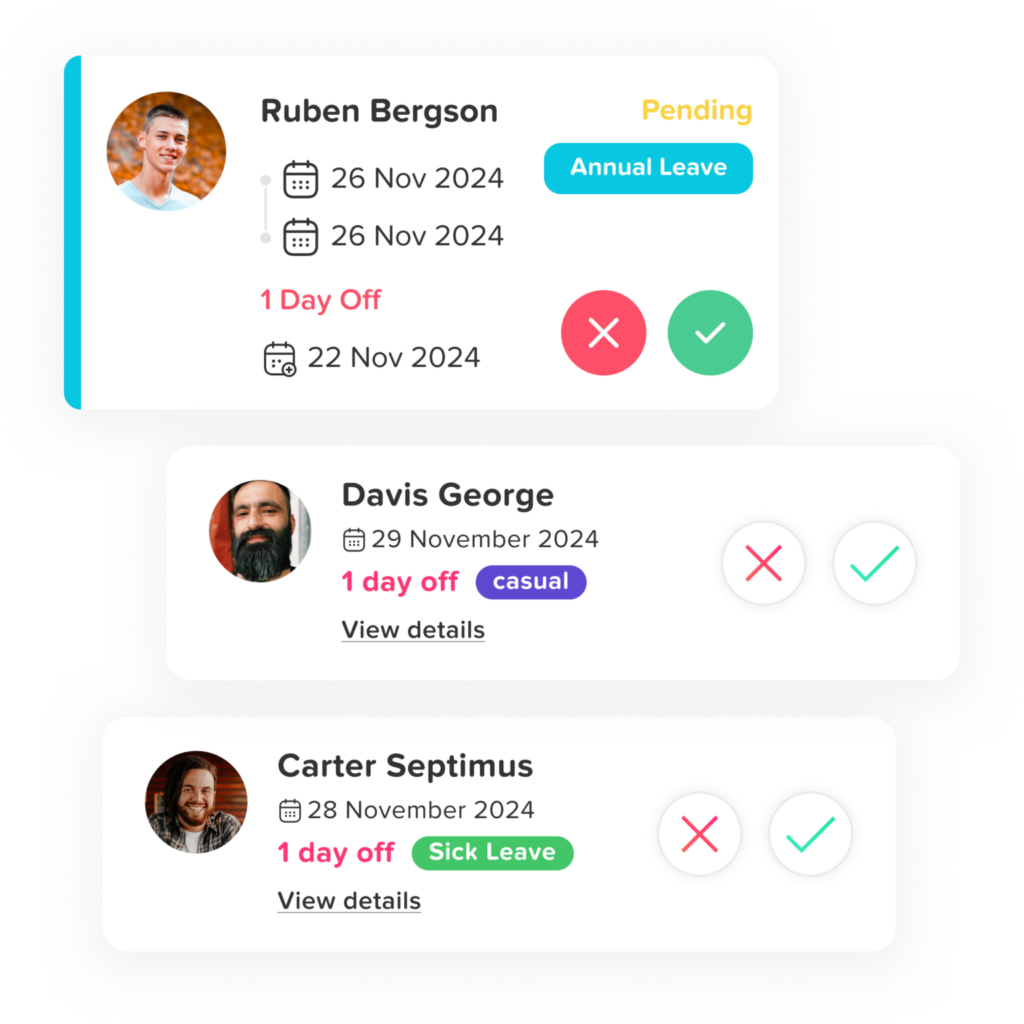Table of Contents
ToggleManaging employee leave shouldn’t be difficult, but for many companies, it still is. Traditional time-off request systems can be slow, messy, and full of errors. Emails get missed, spreadsheets quickly become outdated, and approvals take longer than they should. In today’s workplace, where efficiency and employee happiness matter more than ever, these old methods just don’t work anymore.
That’s where digital tools come in. Platforms like Day Off make managing leave simple and stress-free. They replace clunky manual processes with easy-to-use systems that handle everything, from submitting and approving requests to tracking PTO and generating reports. The result? Less hassle for HR teams and a smoother experience for employees.
Why Your Old Time Off Request System No Longer Works
Traditional ways of managing time off, like using spreadsheets, emails, or paper forms, often cause more trouble than they solve. Here’s why these outdated methods don’t hold up in today’s workplace:
Lack of Transparency
When time off is managed manually, employees rarely have a clear view of their remaining leave days or how company policies apply to them. This lack of visibility can lead to confusion, misunderstandings, and even frustration. Without instant access to accurate information, employees often have to reach out to HR for clarification, which slows everyone down.
Disorganized Approval Process
Requests sent through email or chat can easily get buried in busy inboxes or forgotten in long message threads. As a result, approvals can be delayed or missed entirely, leaving employees unsure of their status. This back-and-forth also creates extra work for managers and HR, who have to keep track of multiple conversations instead of managing everything in one place.
Overlapping Time Off Requests
Without a shared calendar or automated scheduling system, it’s easy for managers to accidentally approve overlapping leave requests. When too many team members are off at the same time, it can lead to staffing gaps, missed deadlines, and extra pressure on those still working. A lack of visibility across teams often turns simple scheduling into a logistical headache.
Prone to Manual Errors
Tracking PTO balances by hand or updating spreadsheets leaves plenty of room for mistakes. A single wrong entry or formula error can throw off records, leading to inaccurate pay or disputes over remaining leave days. These errors not only waste time to fix but can also damage trust between employees and HR.
Time-Consuming for Managers and HR
Manually handling time off means chasing approvals, double-checking records, and resolving scheduling conflicts, tasks that quickly eat up valuable hours. Instead of focusing on strategic goals or supporting employees, HR teams often find themselves bogged down in repetitive administrative work.
Poor Record-Keeping
When requests and approvals are scattered across emails, spreadsheets, and paper forms, it’s nearly impossible to maintain accurate historical data. This makes audits, reporting, and policy enforcement a real challenge. Without a central system, businesses risk losing important information or overlooking compliance issues.
Not Scalable
Manual processes might work for a small team, but as the business grows, they quickly become unmanageable. More employees mean more requests, more approvals, and more room for error. What once seemed simple turns into a time-consuming and error-prone system that can’t keep up with growth.
The Digital Transformation of Time Off Request
User-Friendly Self-Service for Employees
Digital time off tools put control in the hands of employees. With platforms like Day Off, users can:
Request leave in seconds via mobile app or web.
Instantly view remaining PTO, sick leave, and holiday balances.
Receive confirmation of approvals or denials without delay.
Access company policies related to leave within the platform.
This not only reduces dependency on HR but also increases employee satisfaction and trust in the system.


Efficient, Configurable Workflows for Managers
Managers no longer need to comb through emails or consult multiple calendars. With digital solutions:
Requests are automatically routed to the right approver.
Overlapping leave is flagged in advance.
Approvals or rejections are just a tap away.
Custom workflows can be set for different teams or departments.
This saves time and ensures consistency in leave decision-making.
Automatic Accruals and Balance Management
Time off tools calculate leave balances in real-time, factoring in:
Accrual policies (e.g., monthly or annually earned PTO).
Rollover rules (e.g., how much unused time carries over).
Carry-forward limits and expiration dates.
This automation reduces payroll errors and ensures fair, policy-compliant tracking for every employee.
Integrated Team Calendars and Scheduling Visibility
One of the most powerful features of digital tools is calendar integration. Managers and teams can:
See a shared calendar showing who’s off and when.
Prevent conflicts by aligning team schedules.
Plan projects and deadlines with full awareness of team capacity.
This improves team coordination, especially in departments with critical deadlines or seasonal workloads.
Mobile Accessibility for a Remote-Ready Workforce
As remote and hybrid work becomes the norm, mobile access is essential. Tools like Day Off offer:
iOS and Android apps for leave requests on the go.
Push notifications for updates and approvals.
Cloud-based storage so records are always available.
This supports distributed teams and ensures seamless operations regardless of location.
Policy Enforcement and Customization
Every company has unique leave policies. With a digital platform:
You can define unlimited leave types (vacation, sick, parental, bereavement, unpaid leave, etc.).
Rules can be customized for different countries, departments, or seniority levels.
Approval chains can be configured to match internal processes.
This ensures compliance while maintaining flexibility.
Centralized Record-Keeping and Reporting
HR and management benefit from having all leave data stored securely in one place. Digital platforms offer:
Historical records of all requests and decisions.
Exportable reports for payroll, audits, or compliance.
Analytics on time off usage, patterns, and peak seasons.
Such insights help in workforce planning and identifying issues like potential burnout or absenteeism trends.
Additional Benefits of Digital Time Off Request Tools
Digital time off tools don’t just simplify requests and approvals, they bring a range of benefits that make business operations smoother, smarter, and more efficient. Here’s how they help:
Improved Employee Morale
A fast, transparent, and easy-to-use time off process shows employees that their time is valued. When people know their requests will be handled fairly and quickly, they feel more respected and trusted. This leads to higher satisfaction, stronger engagement, and a healthier work culture overall.
Reduced Administrative Workload
Automation takes care of repetitive, manual tasks, like tracking balances, sending reminders, and updating records. This saves HR teams and managers countless hours, allowing them to focus on more meaningful work such as employee development, culture building, and strategy.
Faster Onboarding and Policy Understanding
New hires can easily access company leave policies and start submitting requests through user-friendly digital platforms. This eliminates the need for long explanations or manual training, helping employees get up to speed faster and reducing the administrative burden on HR.
Consistency Across Teams and Departments
Digital tools standardize how time off is managed across the entire organization. Everyone follows the same rules, approval steps, and policies, no matter which team they’re in or where they’re located. This ensures fairness and reduces confusion about who’s eligible for what.
Real-Time Notifications and Updates
With automated alerts, employees and managers get instant updates on request statuses, approvals, and balance changes. This eliminates uncertainty and keeps everyone informed, reducing back-and-forth communication and last-minute surprises.
Better Planning and Coverage
Shared team calendars make it easy for managers to see who’s off and when, so they can plan projects and shifts accordingly. This helps avoid staffing shortages, ensures smooth workflows, and keeps business operations running seamlessly even during busy vacation seasons.
Legal and Regulatory Compliance
Digital platforms keep accurate, centralized records of all leave requests and approvals. This helps companies stay compliant with labor laws, avoid disputes, and ensure consistent treatment of all employees, something that’s hard to guarantee with manual systems.
Data-Driven Insights
Built-in analytics and reporting tools provide valuable insights into workforce trends, such as patterns of absenteeism, burnout risks, or underused vacation days. With this data, managers can make informed decisions that support both employee well-being and business performance.
FAQs
What is a digital time off request tool?
A digital time off request tool is software that lets employees easily request leave and managers approve or decline those requests through an app or web platform. These tools go beyond simple approvals, they track PTO balances automatically, manage team calendars, and streamline the entire workflow. Everything is organized in one place, reducing confusion and saving time for both employees and managers.
How does a digital tool improve the time off request process?
Digital tools make requesting and managing time off faster, simpler, and more transparent. They:
Let employees submit requests directly from a mobile app or desktop.
Automatically route requests for approval and send real-time notifications.
Track PTO balances accurately without manual updates.
Prevent scheduling conflicts by showing team calendars.
Store all leave data in one centralized, easy-to-access system.
The result is a smoother, error-free process that saves time and reduces frustration for everyone.
Is a digital tool only useful for large companies?
Not at all. Digital time off tools are just as valuable for small teams as they are for big organizations. For small businesses, these tools eliminate manual tracking, reduce errors, and make managing time off much more efficient. Platforms like Day Off are designed to be simple enough for small teams yet powerful and scalable as your business grows.
Can these tools handle different types of leave?
Yes. Most digital leave management systems can easily handle multiple types of leave, including:
Paid Time Off (PTO)
Sick Leave
Parental Leave
Bereavement Leave
Custom leave categories based on company policy
This flexibility allows HR teams to manage all types of time off in one consistent system, no matter the company’s policies or regional requirements.
What happens if an employee changes teams or roles?
Digital tools are built to adapt. When an employee moves to a new team or takes on a different role, their leave balance, history, and permissions can be updated automatically. There’s no need for manual data entry or separate tracking, all information moves with the employee, ensuring a smooth transition and accurate records.
Are digital time off request tools secure?
Yes. Reliable platforms use strong security measures to keep employee data safe. This includes encryption, secure authentication, and cloud-based backups. The best tools also comply with privacy regulations and offer transparency about how data is stored and used. Always choose a trusted provider with clear security credentials and data protection policies.
How does mobile access help?
Mobile access makes managing time off flexible and convenient. Employees can request leave or check their balances from anywhere, while managers can review and approve requests on the go. This is especially helpful for remote teams, field workers, or companies with flexible schedules, no waiting for office hours or desktop access required.
Startup
- 25 Employees
- Single Approver
- Three Policies
- Unlimited Team
- Unlimited Locations
Conclusion
Managing employee leave doesn’t have to be complicated or time-consuming. By replacing outdated manual systems with a digital time off tool, businesses can simplify processes, improve accuracy, and create a better experience for everyone. Employees gain clarity and control over their time off, while managers and HR teams save hours of administrative work each week.
In a world where flexibility, transparency, and efficiency define successful workplaces, adopting the right digital solution, like Day Off, isn’t just a convenience, it’s a smart investment in your people and your organization’s future.


